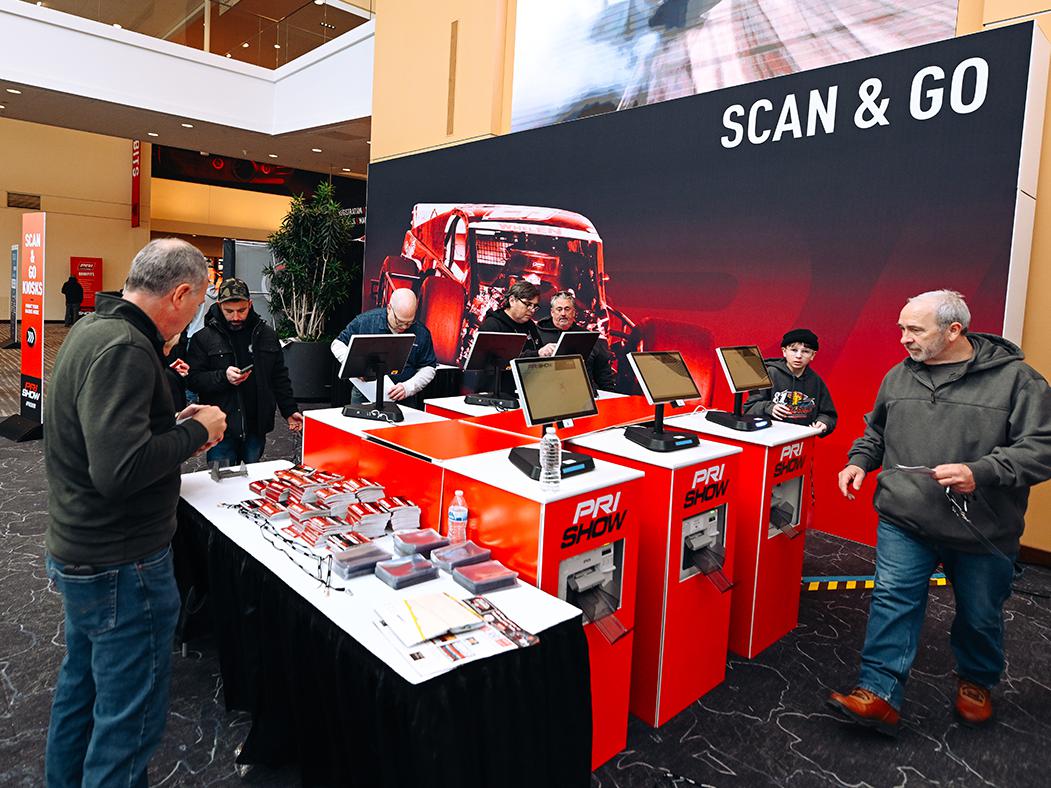Steady Progress
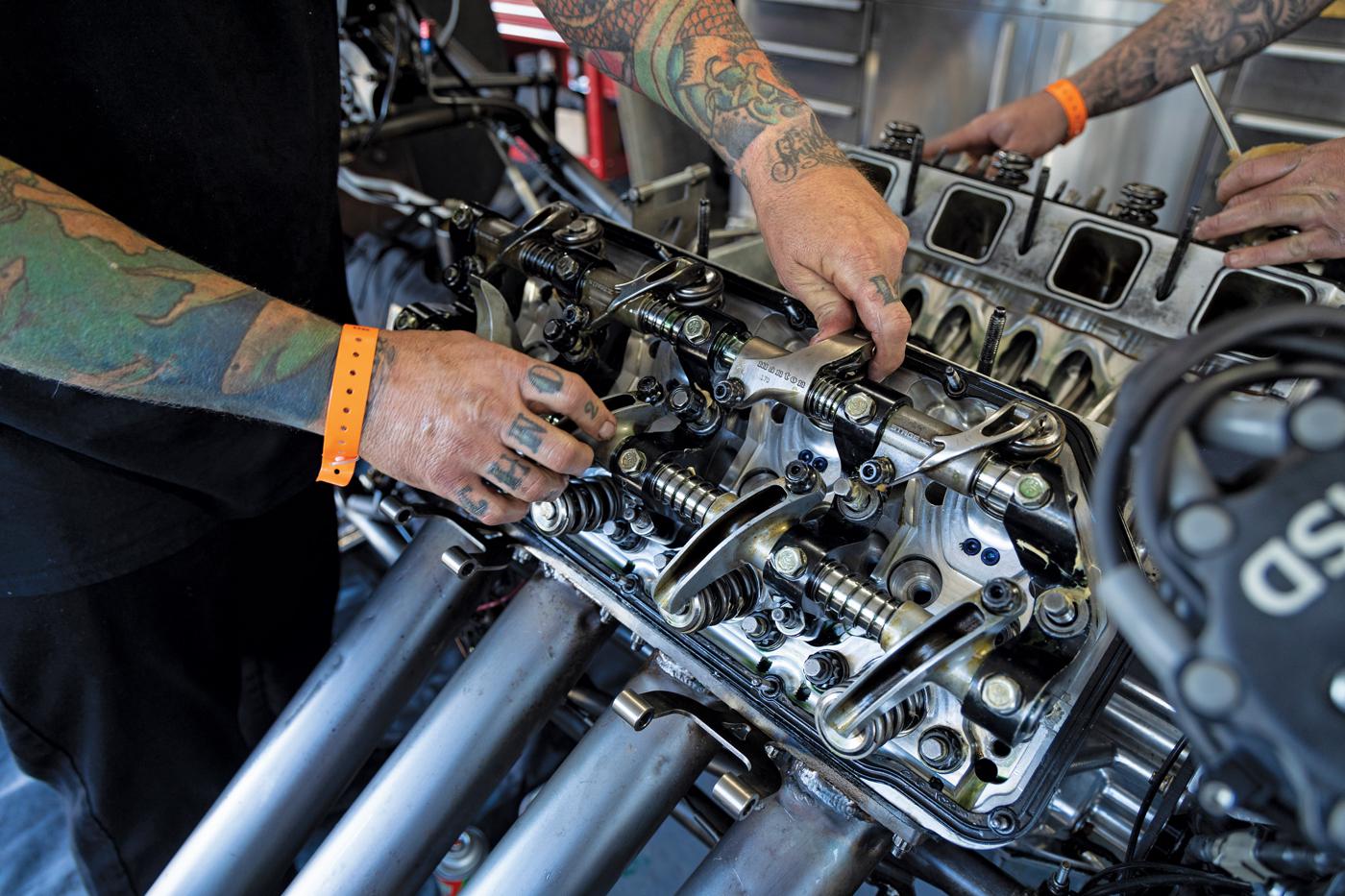
Valvetrain suppliers are busy keeping up with demand and making sure racers understand the system approach to selecting components.
Advances in valvetrain design and durability have come at a rapid pace in the past decade. Highly tuned pushrod engines routinely surpass 9,000 rpm, and some of the top racing classes are required to have rev limiters to keep engines from approaching 11,000 rpm or more. Improved lifters, pushrods, rocker arms, and valve springs—combined with lightweight valves and retainers—have all contributed to not only the power increases but also to engine longevity.
Recognizing the need for all the components to work in harmony is perhaps the most important factor in setting up a camshaft and valvetrain strategy.
“Everything has to be designed for the valvetrain and the application. So there’s no one set lobe design for every application. It just depends on what you’re trying to achieve,” observed Kip Fabre of Cam Motion, Baton Rouge, Louisiana.
Driving Development
Cylinder heads always drive valvetrain development, whether it’s a new design that needs a rocker-arm system or current models that need properly matched components to build a ready-to-bolt-on package.
“There’s constantly something new out there from the cylinder head companies,” noted Rob Remesi of Jesel, Lakewood, New Jersey. “These new heads often require new rocker kits. Any of the current heads coming out are pretty much geared up for shaft rockers.”
“We have unique head kits,” added Adrian Long of QualCast, Nashville, Tennessee. “We don’t sell assembled heads, but we supply the valvetrain kits for rebuilders to assemble them.”
For the most part, valvetrain suppliers are hard at work filling orders and restocking inventory. Demand hasn’t eased much since the rush to build engines during the pandemic was tempered by supply chain and labor challenges. Those problems have leveled out, allowing companies to shift some efforts into new development or expand current lines to meet applications that are growing in popularity.
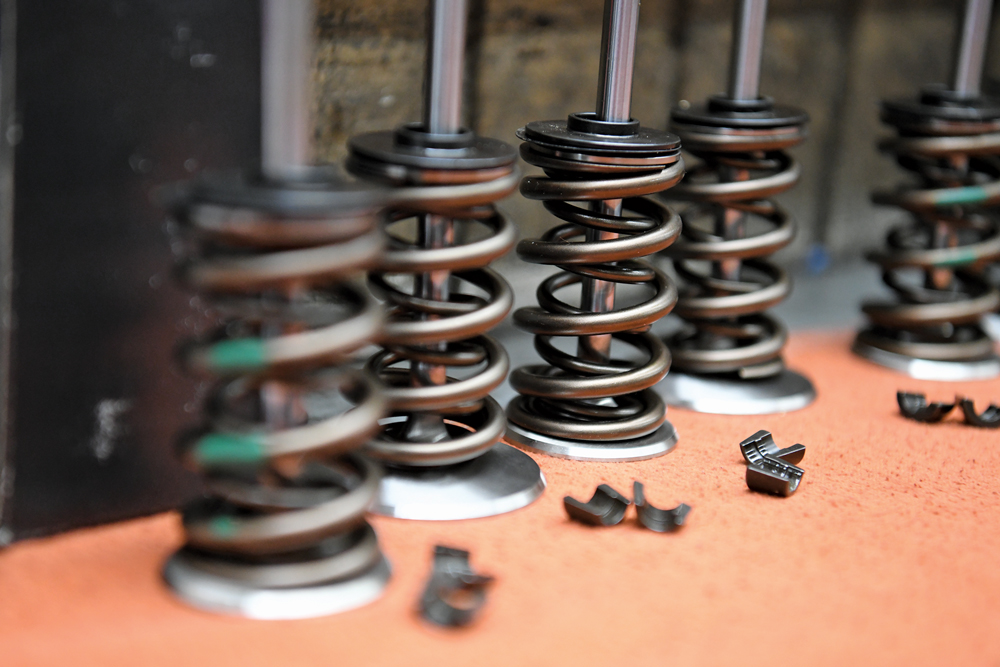
“The only new thing for us right now is the Godzilla engine,” said Eric Bolander of Howards Cams, Oshkosh, Wisconsin. “We should have product sometime this year. The development part will concentrate on the camshaft first. We’ll see what grinds are needed. Then the springs and rest of the valvetrain will come.”
The valvetrain comprises so many different components that taking a system approach isn’t always the easiest task. There’s always a compromise, or sometimes a clear choice is needed, between weight and strength. Working with high-end materials is also driving development decisions.
“We’ve carried our line of stainless valves for a number of years,” said Jack McInnis of Erson Cams, Louisville, Kentucky. “These are very high-quality valves and priced at an attractive point. However, our titanium valves over the years have tended to be custom orders and take time to fulfill. This year we introduced a line of titanium valves, which we stock for specific cylinder head fitment, and we continue to add new styles to that line.”
These valves are machined from one-piece forgings and feature a hardened steel tip to prevent galling. Other features include chromium nitride coating and a radius keeper groove. The valves are available with a choice of many head profiles, including flat face and radius face.
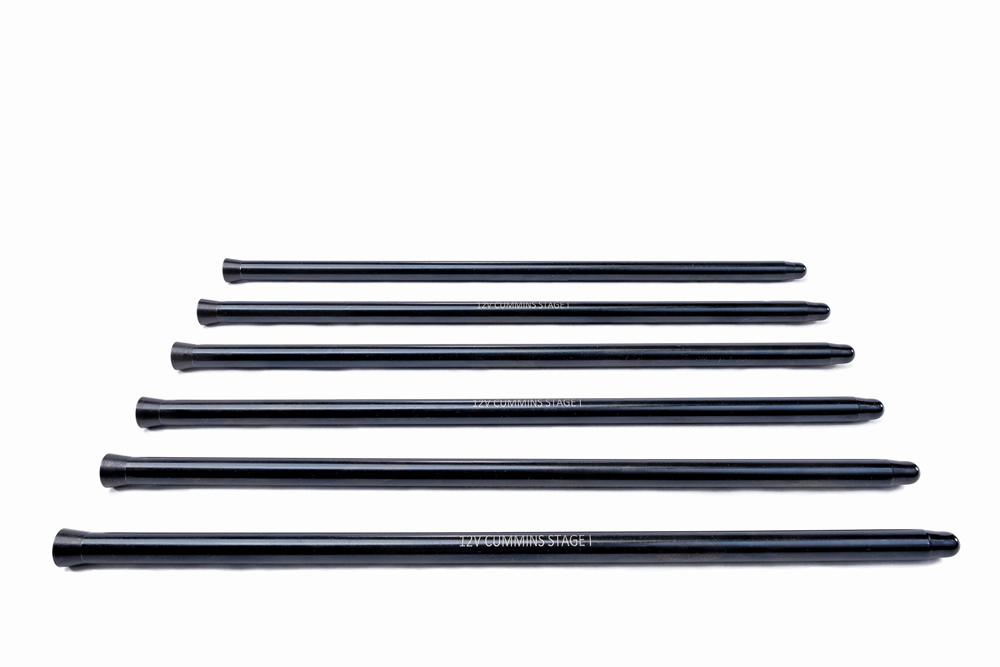
Erson recently added a line of performance diesel valves and pushrods. The intake valves are constructed from 21-4N stainless alloy, and exhaust valves are made from an Inconel alloy with a stellite facing. All valves feature fully machined heads with swirl polished stems, and they are nitrided to increase strength and reduce friction. They’re available for Power Stroke, Duramax, and Cummins engines.
Also available for those engines are new diesel pushrods from Erson. These stock-length pushrods are available in three different series to cover mild modifications or full race applications.
Finally, Erson recently released new pushrods for popular gas-engine applications. They’re constructed from 4130 seamless chromoly. Available in 5/16- and 3/8-inch diameters, these pushrods feature 210-degree-turned radium ends and are fully hardened. Available in numerous lengths, they are also black-oxide coated.
New Ideas
Working with racers and customers helps drive new development at COMP Cams, a division of Edelbrock located in Olive Branch, Mississippi. Again, emphasizing the valvetrain as a system is critical to enhancing performance.
“Much of our recent work has not been directly related to catalog part numbers, but rather toward continued innovation and development as competition engines continue to grow and push the limits of what we think is possible,” said Chris Potter. “The biggest challenge is generating an understanding that the entire valvetrain is a system. A camshaft or lobe change isn’t necessarily going to solve a problem. We can make strides and set up a system for success with the particular lobe family, but system optimization is key when trying to gain an edge over the field in any form of motorsport.”
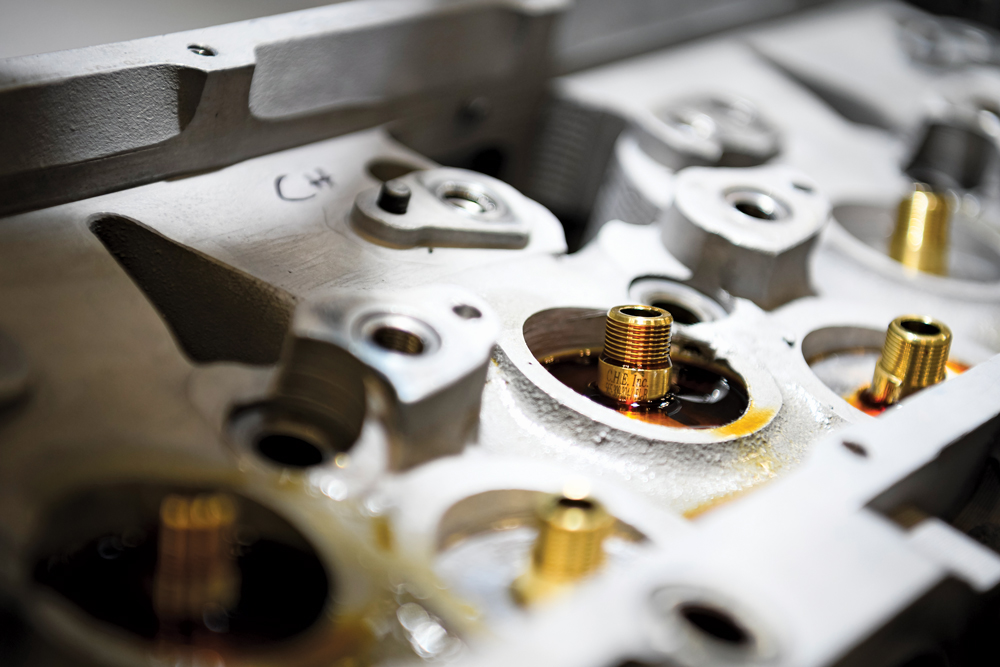
The key is transferring energy throughout the valvetrain. The valve springs absorb most of the energy, but then will turn around and try to give it back to the camshaft. The lifters, pushrods, rocker arms, rocker pedestals, and even the cylinder head all carry some part of the load.
“Each of these components is kind of like a spring. Each absorbs energy and gives it back; much of the time we see this in the form of deflection. Our goal is to transfer as much lift motion from the cam lobe to the valve as quickly as possible without upsetting the system,” explained Potter. “Building an understanding of the flow of energy and motion through a system is critical to optimizing the system around given components. Every engine has variable valve timing. The fact is that most of our competition engines vary the valve timing in the wrong direction, as deflection generally decreases the duration of the cam as rpm increases. We must understand our entire system before we can make large and long-term improvements that make sense.”
The good news is that racers are helping transfer technology to street and sportsman customers. “Things learned from one form of competition can certainly be applied to others. There are a lot of new ideas from what could be considered the tightest form of competition in motorsports that find their way into some of these new series. Some of that design philosophy makes it all the way to some of our latest designs geared toward the street market, like the HGM and HGX hydraulic flat-tappet series,” added Potter.
Over at CHE Precision in Newbury Park, California, development work is helping improve old engines. Modern materials, machining, and heat-treat processes can create valve guides that are much more precise and durable than original equipment on vintage applications. If the original blueprints of the component aren’t available, CHE will create one with the required features and tolerances.
“Then the program needs to be written for machining the part using modern day CNC machines,” said Charles Holguin. “There are industry standards for tolerances that we must adhere to, and in history those tolerances were much broader. But for the best performance, those extremely tight tolerances need to be maintained.
“It is important that the valvetrain geometry is precise,” continued Holguin. “Sometimes when you are working with the historic retro engines, not only were the components cruder and more inferior, but also the tolerances weren’t held as tight. With new technology, we have an opportunity to improve both the components and the overall geometry.”
CHE will select materials based on the application, performance expectations, and operating conditions. The company has also developed its own proprietary bronze alloy designed for rigorous applications.
“Heat-treating processes have definitely evolved over the years, and in using the latest technology for case-hardening and through-hardening, we are able to achieve more specific results. Steel can be ‘hard,’ or it can be ‘tough.’ But those terms aren’t the same, and it is important to determine which is best based on application,” added Holguin.
These aren’t just one-off products. CNC machining has allowed CHE to mass produce precision guides with repeatability. “Along with sophisticated testing equipment that is providing critical data, we are able to manufacture much superior valvetrain components,” Holguin said.
Working closely with select engine builders is helping move the development process at Howards as engineers narrow down a strategy for the Godzilla engine.
“We’re at that ‘What do we want to do?’ stage, then we’ll move to the ‘What can we do?’ stage,” said Bolander. “We work with a lot of people. Any time we’re doing something completely new, we’re usually working with somebody who builds and knows the ins and the outs of the engine. We take their advice and let them test them. I want to know what they do in the real world rather than what it looks like just on paper.”
Matching Components
While many companies develop valvetrain products around the camshaft, QualCast is matching components to its line of cylinder heads. The latest CNC-machined heads for the LS3, LS1, LS7, and small block Chevy are available with valves, springs, retainers, keepers, stem seals, guide plates (if needed), and rocker studs (if needed).
“One of the unique things that we offer the rebuilding aftermarket is allowing folks to do their own porting. If they have a CNC machine or they want to do hand porting, they can put their own touch on our performance heads,” said Long. “They can choose which springs they want instead of having a pre-assembled head. We cater to the rebuilders and let them do their own thing.”
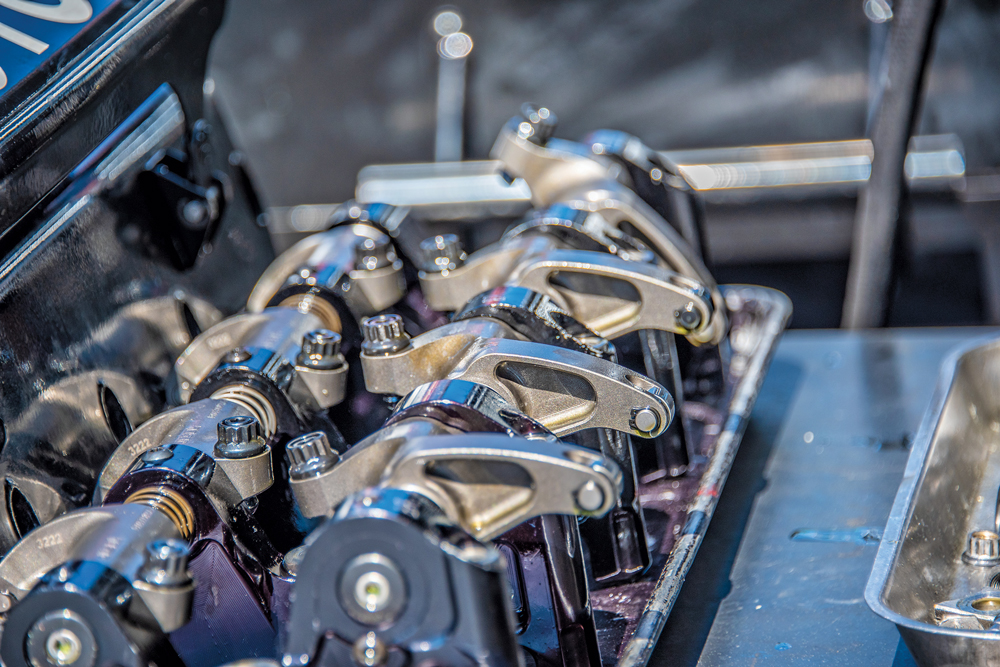
QualCast also has a line of performance valves with a choice between the racer-inspired Black Lightning series and the Street valves. “The Street valves are entry-level, whereas the Black Lightning feature swirl polished underheads and have undercut stems to reduce weight,” added Long.
The Street valves are constructed from 21-2N stainless steel and have chrome-plated stems. The Black Lightning valves have thin-margin heads and nitride-coated stems for less friction. They are available for a variety of popular applications with more being considered.
“We need to be looking at the Gen 3 Hemi, for sure,” said Long.
With more emphasis on power adders and high boost levels, many racers are switching to more durable rocker arms.
“We’re seeing a lot more steel rocker kits being ordered over aluminum,” said Remesi. “The steel rocker market is going to get stronger. Aluminum has a cycle life to it, so eventually there’s potential for failure just because of the material in general. Steel pretty much eliminates that. It’s a stronger material and handles greater cylinder pressures. A steel rocker is also very popular in drag-and-drive because of the amount of time that the engine is actually running between street driving and track driving.”
Remesi said pro style steel rocker arms often come in the Mohawk-beam design, but there is a more traditional looking sportsman steel rocker.
“We’re also happy with the steel alloys that we’ve chosen. We always look. If we see something that might be better, we’ll try it. But we’ve had great success with the alloys that we’re currently running,” said Remesi.
For the future, Jesel may expand into other valvetrain components and even diesel applications. “Right now, we’re just kind of keeping up with demand, as we’re pretty much maxed out at capacity,” said Remesi. “If machining efficiencies pick up, we could always look at doing additional products. We might be looking at doing pushrods again to complete the package between the lifter and the rockers. We have expanded into diesel with rocker kits. It was very challenging making rocker kits for diesels just because of the footprint of the head and what you have to work with. But we had a couple of good diesel engine builders that we worked in conjunction with to develop these kits.”
Over at Isky Racing Cams in Gardena, California, hydraulic roller lifters are now available for Chrysler engines and other applications.
“We have needle and bushed hydraulic roller lifters for the 340 and 440 Chryslers. There’s a .904 big block Chevy bushed, and we have them for Godzilla,” said Nolan Jamora. “Also, we have new Hemi solid rollers, and the late-model Hemi hydraulic roller is new.”
These new hydraulic lifters feature the short-travel design and can take up to 550 pounds of open spring pressure.
“That’s all standard for our product now. We’re spreading out the lines that we have. We even have them for the Ford FE engines, in addition to others,” added Jamora.
Numerous iterations of the Isky bushed lifter have been on the market over the years. “We’re pretty much on our final material,” said Jamora. “The same material that we’re using on the street lifter, we use in our giant keyway lifter. So we’ve spread the one material across all the platforms. Everybody gets the best material. There are no more stages.”
Isky is also developing more valve spring applications, including those with higher pressures as well as smaller diameters.
“We use PSI for our designs. So, we do a 1.300-inch dual spring that’s 230 on the seat and 715 open,” said Jamora. “We can do a 1.520-inch dual. That’s pretty small, and its 445 on the seat and 1,250 open.”
The theory behind the smaller springs is less rotating mass that reduces heat, and the retainer is smaller and lighter, as well. “It’s just a smaller, nicer package,” said Jamora.
Stability
Overall, valvetrain components are getting stronger to improve stability in the system. Engine builders have discovered that lighter isn’t always better.
“The more stable you make a rocker arm and the stand, the better off you are,” stressed Fabre. “We just did a lot of work with Top Fuel lately, and they have two different rocker stands. One rocker stand would produce two more pounds of boost because it wasn’t deflecting. Deflection is a killer.”
Fabre said deflection can be identified when boost levels suffer. “If you have a cam that works and then you put a stiffer rocker setup on it, it can actually slow down,” explained Fabre. “The best option you have is to make everything stiff. Then you tune the cam to make it make the most power.
“Everything is related to something else,” continued Fabre. “Here’s what people don’t realize about cams: The cam is not what makes the power. It’s the cylinder heads, intake manifold, combustion chamber, compression, and exhaust. The cam and valvetrain are there to get the best out of it.”
SOURCES
Cam Motion
cammotion.com
CHE Precision
cheprecision.com
COMP Cams
compcams.com
Erson Cams
pbm-erson.com
Howards Cams
howardscams.com
Isky Racing Cams
iskycams.com
Jesel
jesel.com
QualCast
qualcast.com
 MEMBERSHIP LOGIN
MEMBERSHIP LOGIN JOIN PRI
JOIN PRI

